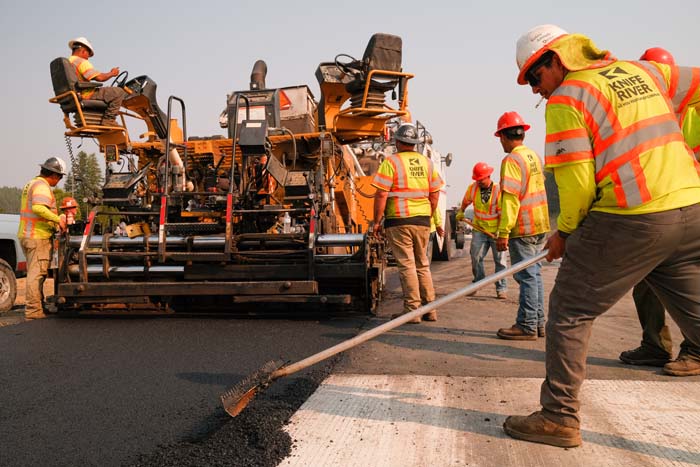Wallowa-Whitman burns benefit elk population
Published 9:51 am Friday, November 8, 2013

- In 2012, Oregon Department of Fish and Wildlife counted 2,867 head of elk on the Zumwalt Prairie and 2,376 in the adjacent national forest. (PATRICIA JOHNSON photo)
Fall prescribed burns in Wallowa helping improve elk habitiat
JOSEPH – There’s more to prescribed fire than meets the eye. During a fall burn in northern Wallowa County last month, improving elk habitat was one of the targets, with some help from the Rocky Mountain Elk Foundation.
Burning has been used for thousands of years to clear encroaching trees and to increase pasture. Ronald Wakimoto, University of Montana professor of forest fire science, said Native Americans used fire to enhance the edges where prairie meets forest to increase hunting opportunities as well as to enhance the habitat for other crops like camas and berries.
“They certainly enhanced the land by burning or they wouldn’t have been burning,” said Wakimoto. “They observed what wildfire did and emulated the same process.”
Nathan Goodrich, fire management officer for the Wallowa-Whitman National Forest’s North Zone, said the burns remove encroaching trees and create more openings.
Fall rains held up planned burns across the North Zone, but by late October conditions improved enough to burn 400 acres in the Arroz management area.
Goodrich said the management area stretches from Thomason Meadows to Crow Creek and it will take several years to complete the proposed burns that will clean up dead and down trees, encroaching white fir, while improving habitat for grass and shrubs.
Understory burning is a tool the Forest Service has used for decades, but Johnson said this is the first time she has received grant money from the Elk Foundation to use fire to improve habitat. She said she has applied for more funding, that if received, will help burn units in the Chesnimnus area adjacent to Arroz.
Johnson said, “The funding is to improve elk habitat forage quality and quantity. By increasing forage and nutritional value it helps prepare not only the adults for winter survival, but helps cows conceive, have successful pregnancies, and deliver good-sized, healthy calves that will be able to survive.”
If the Foundation grants the funding the Forest Service will be able to burn as early as Spring 2014. Burning in the spring is dependent on whether the ground dries up enough before bird migration and deer and elk deliver their young.
Goodrich said, “In the spring you need to burn when you can get it hot enough right during green-up.”
He said there is a fine line between being able to burn the brush to encourage growth and killing it. Fall can be better when its warm enough to burn and the benefits can be seen in the spring. Johnson said ceanothus, elk sedge, snowberry, and willow grow in the burn areas and are species on which elk browse.
For wildlife benefit Johnson said, “In some ways fall is a better time to burn because you don’t have to worry about reproduction and the young are up and running.”
The areas most suitable for burning with elk in mind, said Goodrich, are along the edge of the forest where it meets the prairie.
Goodrich said, “The overall intent is to try to pull elk off the Zumwalt Prairie and onto the forest. There is less competition on the prairie and lots of food, but the elk are competing with cattle. We are trying to entice them to stay on the forest and provide some prime groceries close to the boundary. There are primo spots to burn to pull elk off the Zumwalt so they stay a little longer on the forest.”
Johnson said the burns will create a mosaic of open ground and shelter, creating good forage and good cover, two essential attributes for elk to thrive. Burning will kill off the shade tolerant trees so the ones that are not shade tolerant can flourish.
“If we burn the grand fir and leave the ponderosa and douglas fir we can get the sunlight to the forest floor and get better forage and increase quantities,” said Johnson. “With burning you are getting increased quality of forage, higher nutrition, while burning old decadent forage, needles, and dead wood and replacing nutrients, through ashes, back into the soils.”
Johnson said she has completed an environmental analysis to burn in the Chesnimnus area for elk habitat. She said Nov. 11 is the end of the appeal period, but doesn’t anticipate any.
“When we went out for public comment basically we got back what a good project this is, but to watch out for neotropical migratory birds and other wildlife,” said Johnson.
The main partners, she said, were Hells Canyon Preservation Council and the Nez Perce Tribe.
Angela Sondenaa, wildlife biologist for the Nez Perce said, “The tribe does support burning for forage improvement. This is important hunting ground for the Tribe.”
Oregon Department of Fish and Wildlife is another partners, said Johnson, and wrote a letter of support for additional Elk Foundation funding. She said she should know by January if the funding will be granted.






